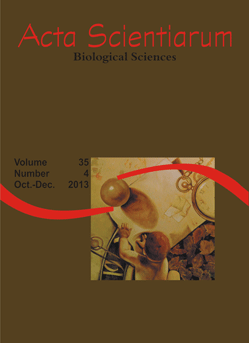<b>Morphological and anatomical characterization of the digestive tract of Centropomus parallelus and <i>Centropomus undecimalis</i></b> - doi: 10.4025/actascibiolsci.v35i4.14352
Abstract
Centropomus parallelus and Centropomus undecimalis are the most common species of Centropomidae in Brazil. Some authors attribute their failure to grow under in artificial conditions due to limited knowledge on the morphological and functional development of their digestive system and on nutrition requirements of both species. Current research characterizes histologically and histochemically the digestive tract of Centropomus parallelus and Centropomus undecimalis to provide a histophysiological assessment for studies related to their nutritional needs. In the esophagus, the mucous cells in the epithelium stained positively for PAS and AB. In the stomach, positive reactions to PAS and negative to AB respectively occurred on surface and mucous cells in the epithelium and in the lamina propria. In the intestine, goblet cells showed ratio similarity, with mucus being positive in AB and PAS. A greater concentration of these cells existed in the middle and distal intestine, with a greater increase of secretions when compared to those in the proximal intestine. Results show that Centropomus parallelus and Centropomus undecimalis display the main features of the digestive tract of carnivorous fish, a well-developed stomach and a relatively short intestine. In fact, they give insights for future studies on the mechanisms related to the species´s digestive and absorptive physiology.
Downloads
DECLARATION OF ORIGINALITY AND COPYRIGHTS
I Declare that current article is original and has not been submitted for publication, in part or in whole, to any other national or international journal.
The copyrights belong exclusively to the authors. Published content is licensed under Creative Commons Attribution 4.0 (CC BY 4.0) guidelines, which allows sharing (copy and distribution of the material in any medium or format) and adaptation (remix, transform, and build upon the material) for any purpose, even commercially, under the terms of attribution.
Read this link for further information on how to use CC BY 4.0 properly.












1.png)




3.png)













